By Andrew Kelsey
There are 142 state parks and forests in Connecticut, from Above All State Park in Warren/Litchfield to Wyantenock State Forest in Cornwall. The forests and parks are throughout all areas of the state, including Bolton Notch State Park in Bolton, which features hiking and rock climbing, and Quaddick State Forest in Thompson, which offers a range of activities such as hiking and letterboxing.
The Connecticut Department of Energy & Environmental Protection, or DEEP (portal.ct.gov/deep), provides 1,400 campsites throughout the state, including 38 rustic cabins for outdoor enjoyment. Camping areas can be found in a variety of settings like shadowy woodlands, sandy shoreline beaches, inland lakes and secluded islands.
“Connecticut’s bounty of natural and physical amenities, greenways, multi-use paths, parks, and forested area are some of the state’s greatest assets for encouraging physical activity,” stated the University of Connecticut’s College of Agriculture, Health, and Natural Resources (cttrails.uconn.edu). “The DEEP estimates that there are over 2,000 miles of multi-use trails within CT State Parks and Forests alone (and likely over 3,000 miles including those not in the park system).”
The website cttrailfinder.com provides people with a way to pinpoint where to go for particular trail activities, such as hiking or mountain biking, and enables them to select from four difficulty levels: easy, moderate, advanced and strenuous. Trail seekers can even choose what terrain or settings they are looking for, including packed dirt, crushed stone, rock/ledge and river/stream, just to name some.
Looking for a hiking adventure series of sorts? The Appalachian Trail is the longest hiking-only footpath in the world, running 2,193 miles from Georgia to Maine. For those interested in doing the Nutmeg State portion of the trail, there are 49 miles of it in northwestern Connecticut.
The Connecticut Office of Tourism website, ctvisit.com, offers tips on how to break Connecticut’s Appalachian Trail sampling into seven manageable hikes. The site includes the following reminder: “These are all two-car hikes, meaning you leave one car at the start and one at the ending point, so you don’t have to hike all the way back. If you are hiking solo, then you will need to double your miles and hike back!”
According to the Connecticut Appalachian Mountain Club (ct-amc.org), “The Appalachian Trail is managed as a ‘primitive footpath.’ Hikers are expected to be self-reliant, and to carry appropriate equipment for the season and terrain.”
For those who like camping, Connecticut offers campgrounds, including sites with rustic cabins in 13 state parks or forests. Among them are those with wooded sites, some near lakes or ponds, and others near the ocean such as Hammonasset Beach State Park. Backpack camping includes primitive sites at designated locations.
For canoers and kayakers, there is river camping. Connecticut has four public camps along the Connecticut River at Hurd, Gillette Castle, River Highlands and Selden Neck State Parks with primitive, river-side sites with fireplaces and pit toilets for individuals traveling on the river. Stay is limited to one night.
Anthony Anthony, the chief marketing officer for the Connecticut Department of Economic and Community Development, oversees the Connecticut Office of Tourism and points out that Connecticut has quite a lot for outdoorsy people.
“Despite being a small state, Connecticut offers a remarkable variety of adventures to indulge in, and it doesn’t just come alive during the summer season, but year-round there is a wide range of recreational activities,” he said.
This summer, Connecticut was ranked number 1 for states in the country for hiking by Why This Place, scoring high for its large proportion of hiking trails, waterfalls, and state and national park coverage (whythisplace.com/best-states-in-america-for-hiking).
“That’s due in part to its accessibility offering a gateway to the great outdoors with a well-connected trail system and convenient entry points to various trails,” Anthony said. “With 142 state parks and forests, the variety of hiking options really caters to hikers of all skill levels. Sprinkle in the diverse natural landscapes—the lakes, rivers, waterfalls and wildlife habitats—and there is a really rich backdrop for hiking.
“And because Connecticut is home to a remarkably diverse collection of state parks, each offers a unique experience, especially for those who love camping. Whether you prefer camping in a tent, RV or cabin, the state has a range of options. There are the coastal and lake parks like Hammonasset Beach State Park, Rocky Neck State Park and Lake Waramaug State Park, which are ideal for families, as many offer amenities like playgrounds, picnic areas and organized activities,” Anthony continued.
Anthony added that for those who prefer a more secluded and tranquil camping adventure, the forests and wildlife reserves are the perfect location. During the summer season, there is no shortage of opportunities to have fun on the water kayaking, canoeing and paddleboarding. Many parks also offer watercraft rentals, he said.
“Connecticut is also a haven for fishing, giving anglers the option for freshwater and saltwater fishing. For those who prefer staying dry on land, Connecticut’s diverse habitats provide a sanctuary for wildlife viewing and birdwatching. While the summer months indulge the water lovers, thrill-seekers can experience Connecticut throughout the year with rock and ice climbing, backyard adventure UTV tours, mountain biking, and ziplining,” Anthony said. “And if the adventure activities aren’t enough, Connecticut hosts an array of outdoor events and festivals throughout the year, celebrating nature, arts, culture and many local traditions.”
Giving Back
From trail maintenance to adopting a park, there are ways for those interested in helping out and giving back to do so. And plenty of scenic terrain in need of some TLC.
The Connecticut Forest and Park Association’s mission is to connect people to Connecticut’s forests, parks and blue blazed hiking trails and ensures these special places are protected and well-managed for future generations. Back in 1929, it launched the blue blazed hiking trail system as a way to explore and appreciate the state’s forests. The trails are hosted in 825 miles of private, town and state land and stretches across 96 towns. The Goodwin Conservation Center in Hampton is run by the DEEP and has a public/private partnership with the Connecticut Forest and Park Association to provide forest-based educational programs for all ages.
Beth Bernard, education director and program director at the Goodwin Conservation Center (portal.ct.gov/deep/education/goodwin/goodwin-conservation-center), noted that getting outside is good for people. “It’s no secret parks, forests, getting outdoors, hiking improves our mental health,” Bernard said. She added that trees are important for keeping temperatures down and mitigating the effects of climate change. Donations and volunteer work help with the mission of protecting the state’s important forests and parks.
Wanda Torres, the Adopt a Park volunteer coordinator in the DEEP’s State Parks and Public Outreach Division in Hartford, said the state’s Adopt a Park program was established 10 years ago.
“The Adopt a Park program was mainly created for supporting the sites that don’t have that much support. Over the years, we’ve had 500 to 600 volunteers at one time or another,” said Torres, adding that children 16 and under can help out if accompanied by an adult. The bulk of the volunteers are people who are retired and have the time to contribute. “They’re amazing because a lot of them come out with knowledge about trees, plants, invasives,” she continued.
The state’s 142 parks and forests are divided into 23 management units, each responsible for several park sites with just one supervisor and a person or two to help with maintenance. “That is why we need volunteers, and we appreciate volunteers so much,” Torres explained. From gardening to carpentry to electrical work, there are many needs within the parks. “There’s something for everybody who wants to give something back.”
Some of the parks, such as Haddam Meadows, have a group of volunteers that stays on top of removal of invasive plants, such as poison ivy, which not only can be trouble for hikers but can also suffocate trees.
Volunteers are needed to monitor trails so downed trees and broken branches can be cleared. “Anything that can pose a danger for visitors,” Torres said. “Other volunteers have, in the past, helped us build a boardwalk, for example, at Rocky Neck State Park.”
Nature may provide a way to get away from the office but even it can even get a little corporate. Business groups sometimes dedicate a day of service by volunteering at parks and enjoy a company picnic, Torres said.
The parks and forests serve people with a wide range of interests whether it is cool, cold, warm or hot out.
“Anyone will find something to do somewhere; from people with children, mountain bikers, athletic visitors, people with some disability issues, there is something for everyone. There is something for every single season of the year,” Torres concluded.


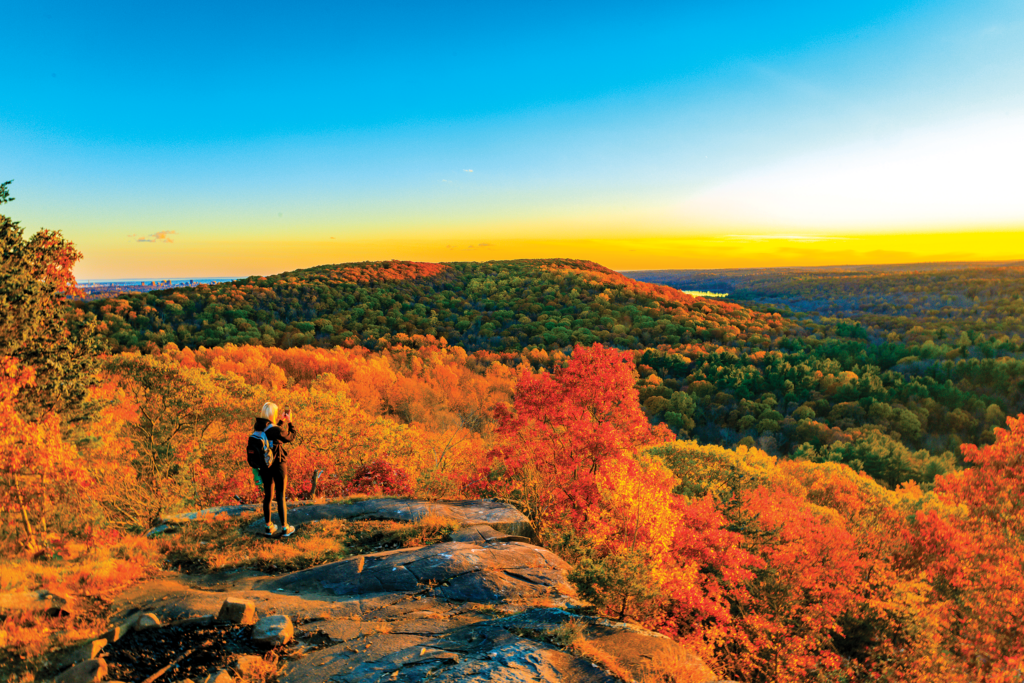



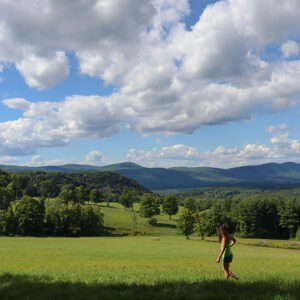

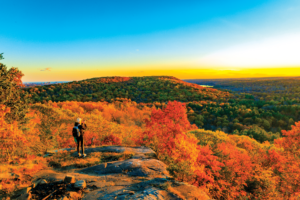
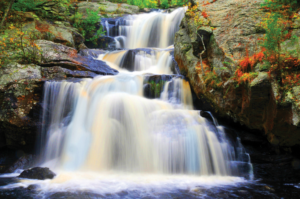
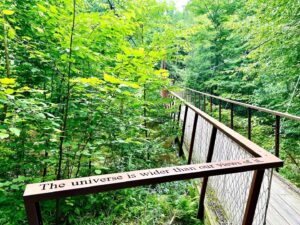
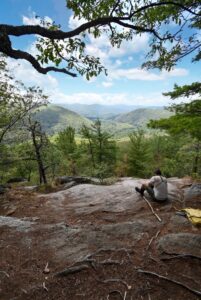
More Stories
In the Water: From Wakeboards to Tubes and Lakes to Long Island Sound
Flight in Connecticut: Soaring to New Heights
In the Snow